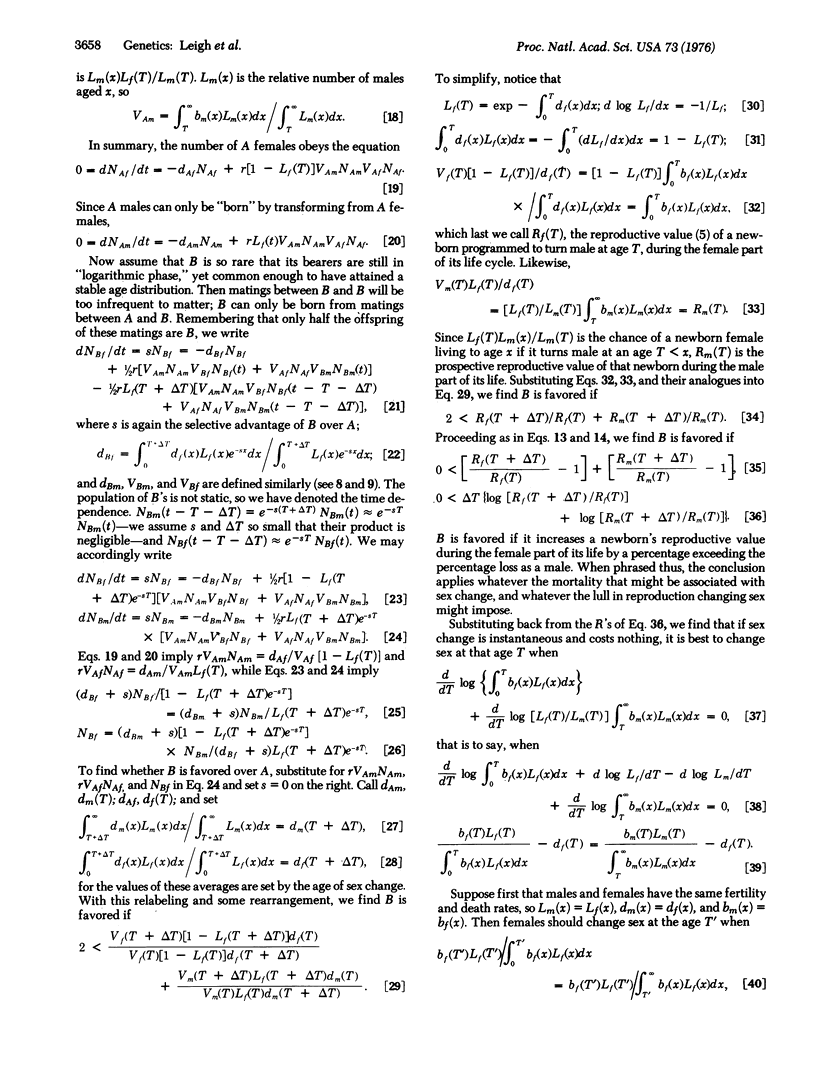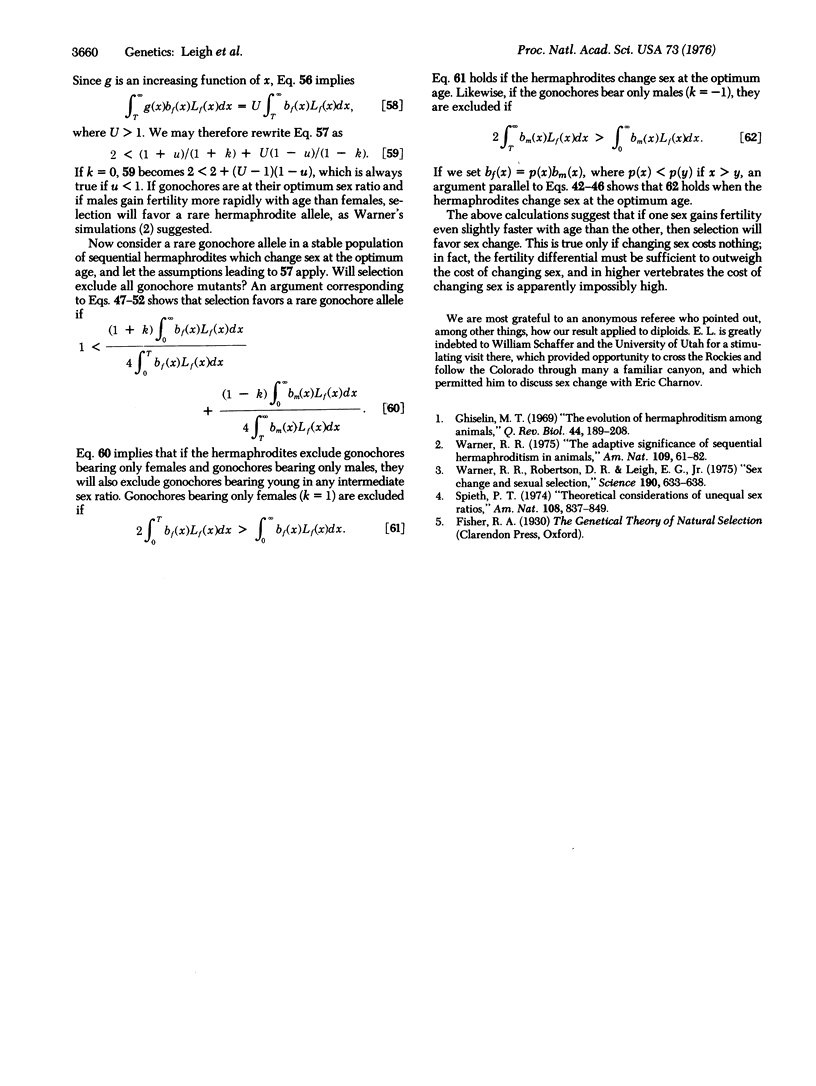Abstract
We describe the analogy between the theory of natural selection on sex ratio in newborn gonochores (which will not change sex), and on the age of sex change in sequential hermaphrodites (which are all born into one sex and change to the other later on). We also discuss the conditions under which natural selection favors sequential hermaphrodites over gonochores and vice versa. We show that, in a nearly stable population of nearly constant age composition, selection favors a rare mutant if it increases the prospective reproduction of its newborn bearers that are (or while they are) members of one sex by a percentage exceeding the percentage loss to the other sex.
Full text
PDF




Selected References
These references are in PubMed. This may not be the complete list of references from this article.
- Ghiselin M. T. The evolution of hermaphroditism among animals. Q Rev Biol. 1969 Jun;44(2):189–208. doi: 10.1086/406066. [DOI] [PubMed] [Google Scholar]
- Warner R. R., Robertson D. R., Leigh E. G., Jr Sex change and sexual selection. Science. 1975 Nov 14;190(4215):633–638. doi: 10.1126/science.1188360. [DOI] [PubMed] [Google Scholar]


